ANTH 1120 Critical Reading Response: Traditional Medicines in Tanzania
VerifiedAdded on 2022/08/16
|6
|1163
|14
Report
AI Summary
This report analyzes Rebecca Marsland's article, "The modern traditional healer: Locating ‘hybridity’ in modern traditional medicine, southern Tanzania," focusing on the use of traditional medicines in the Kyela District of Tanzania. The report examines the practices of traditional healers (Waganga), their integration with modern biomedical practices, and the socio-economic factors influencing medicine usage. The article discusses the intentional hybridity of traditional healing techniques, the competition between traditional and biomedical practitioners, and the influence of government policies and alternative medical practices. The author highlights the beliefs and practices associated with the region, the societal and religious discriminations in the field of bio-medics, and the business-oriented approaches of the waganga culture. The report evaluates the author's assessment of the dualism of biomedicines and the transition of usage of traditional medicines and conservations of the healers, the psychological aspects of traditional medicines, and the competition between traditional and modern clinical practices. The report concludes that the article provides insights into the cultural and clinical issues related to the Tanzanian people and the potential changes in traditional medicines to produce hybrid medicines.
1 out of 6
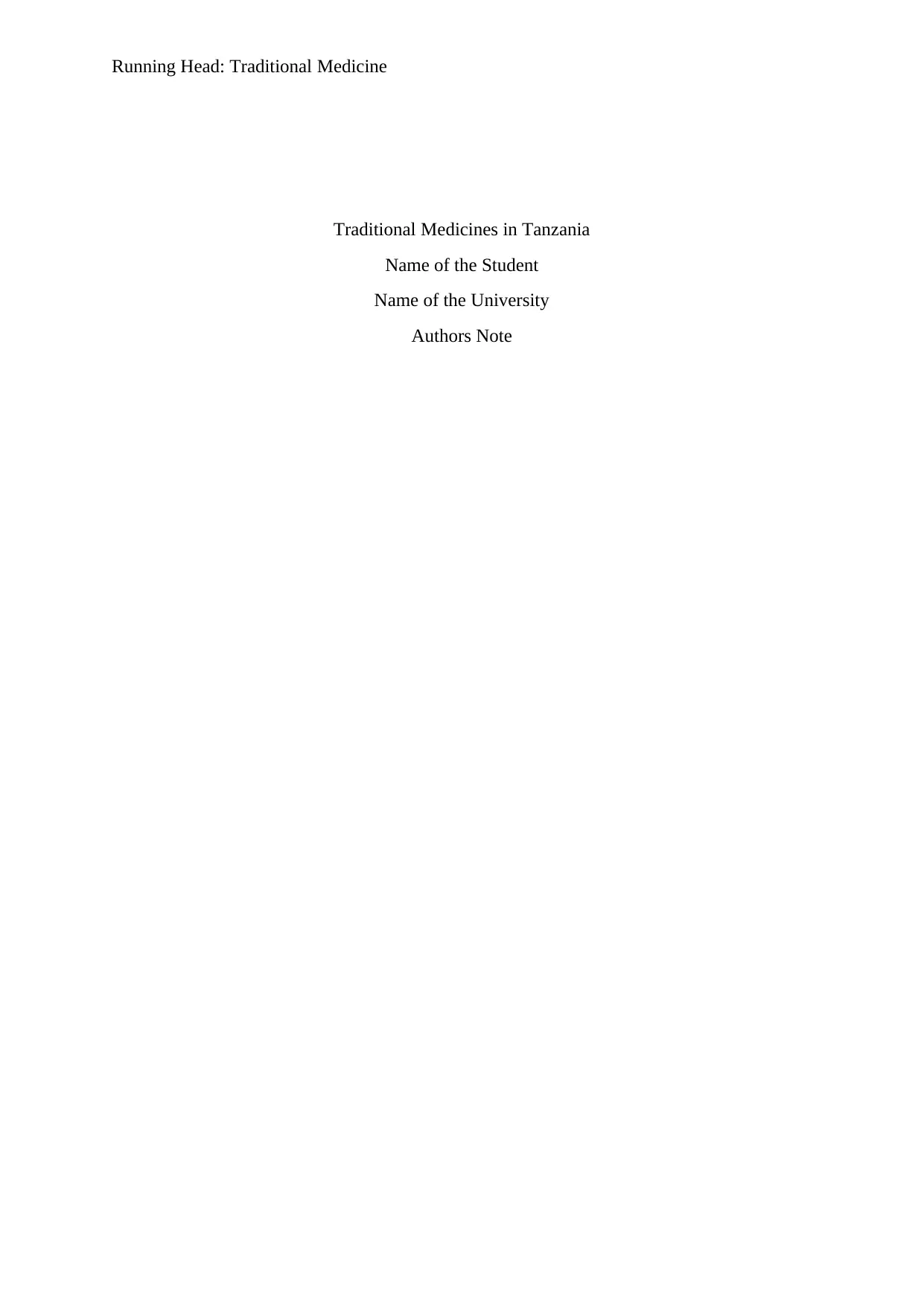
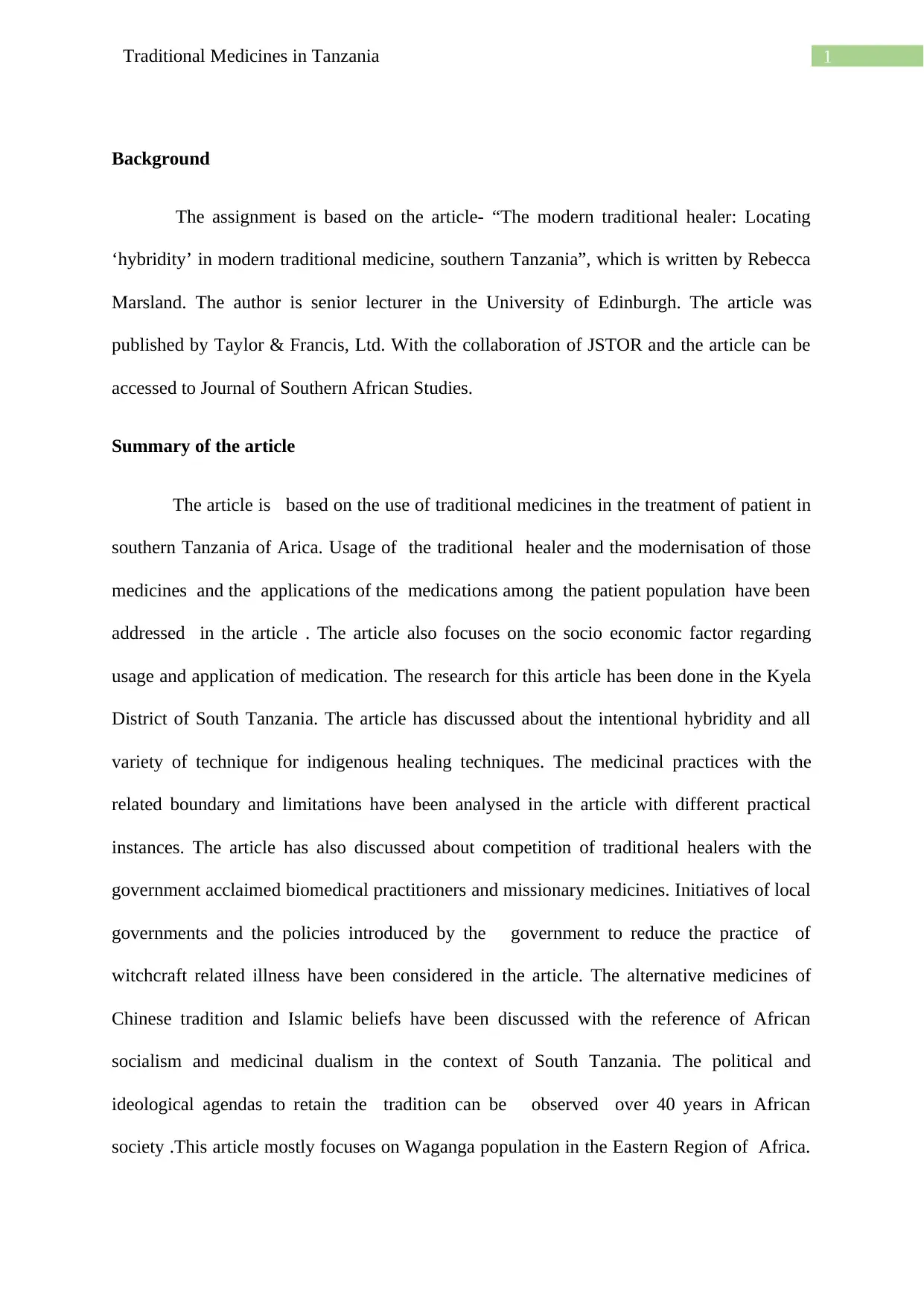
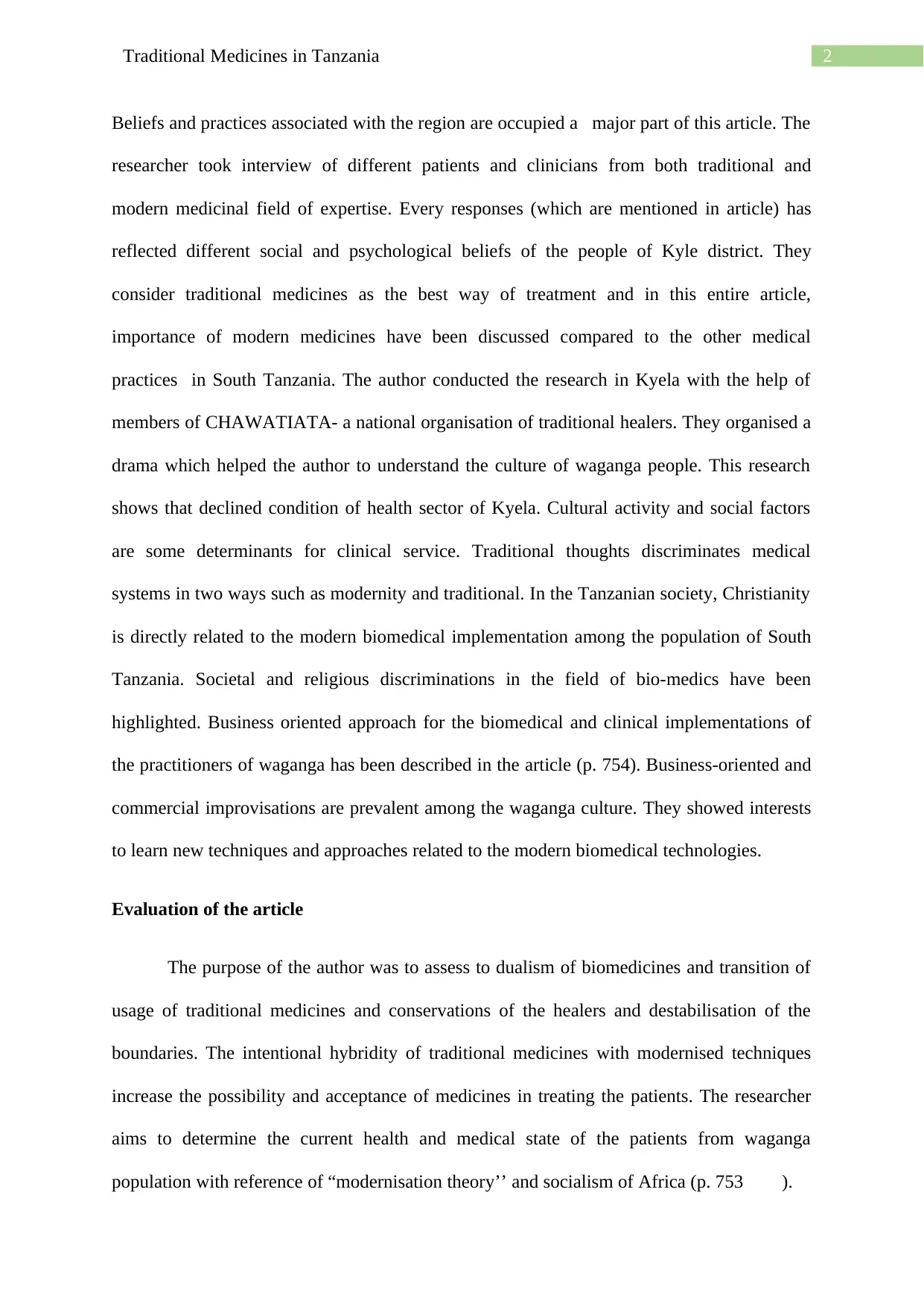

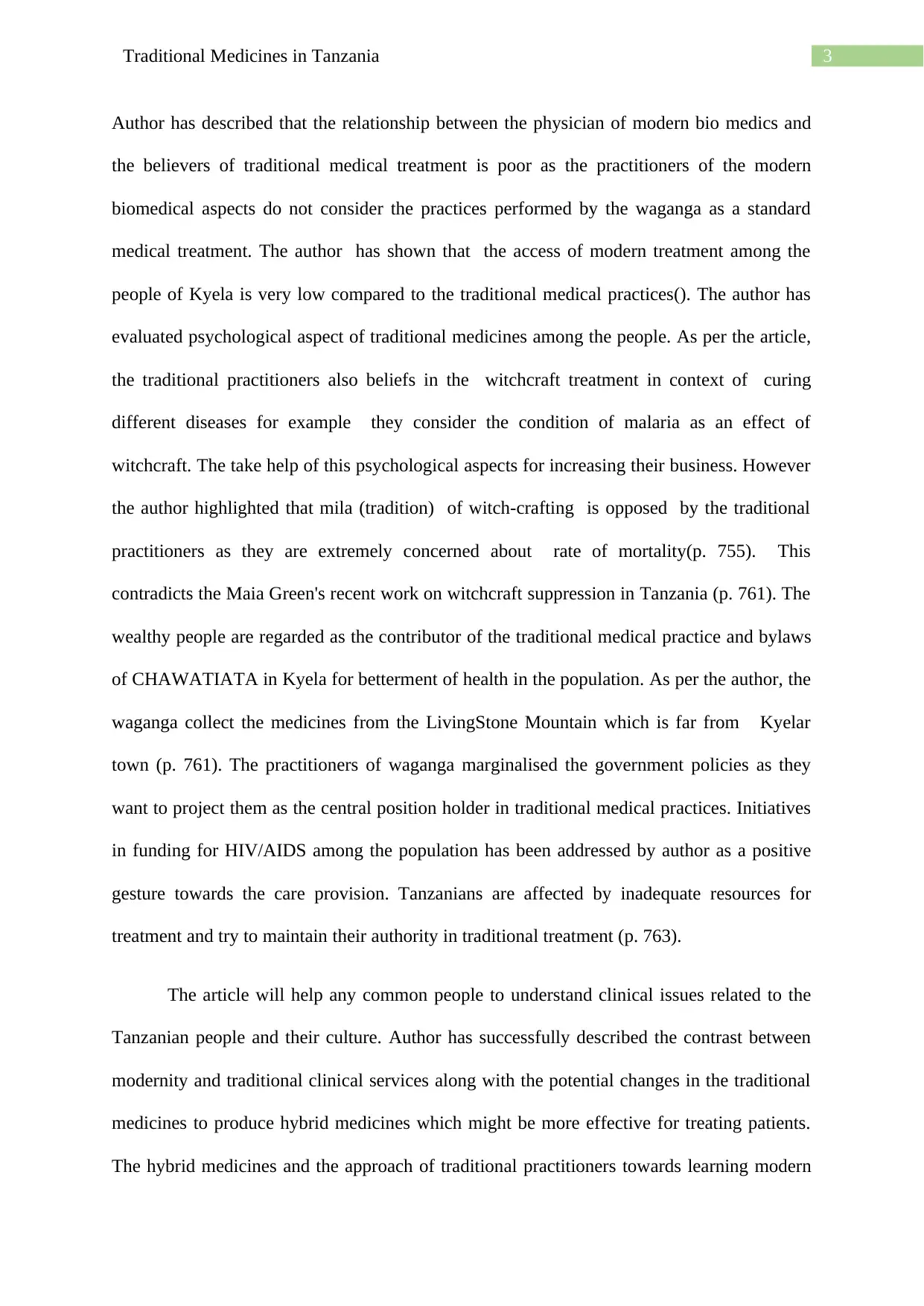
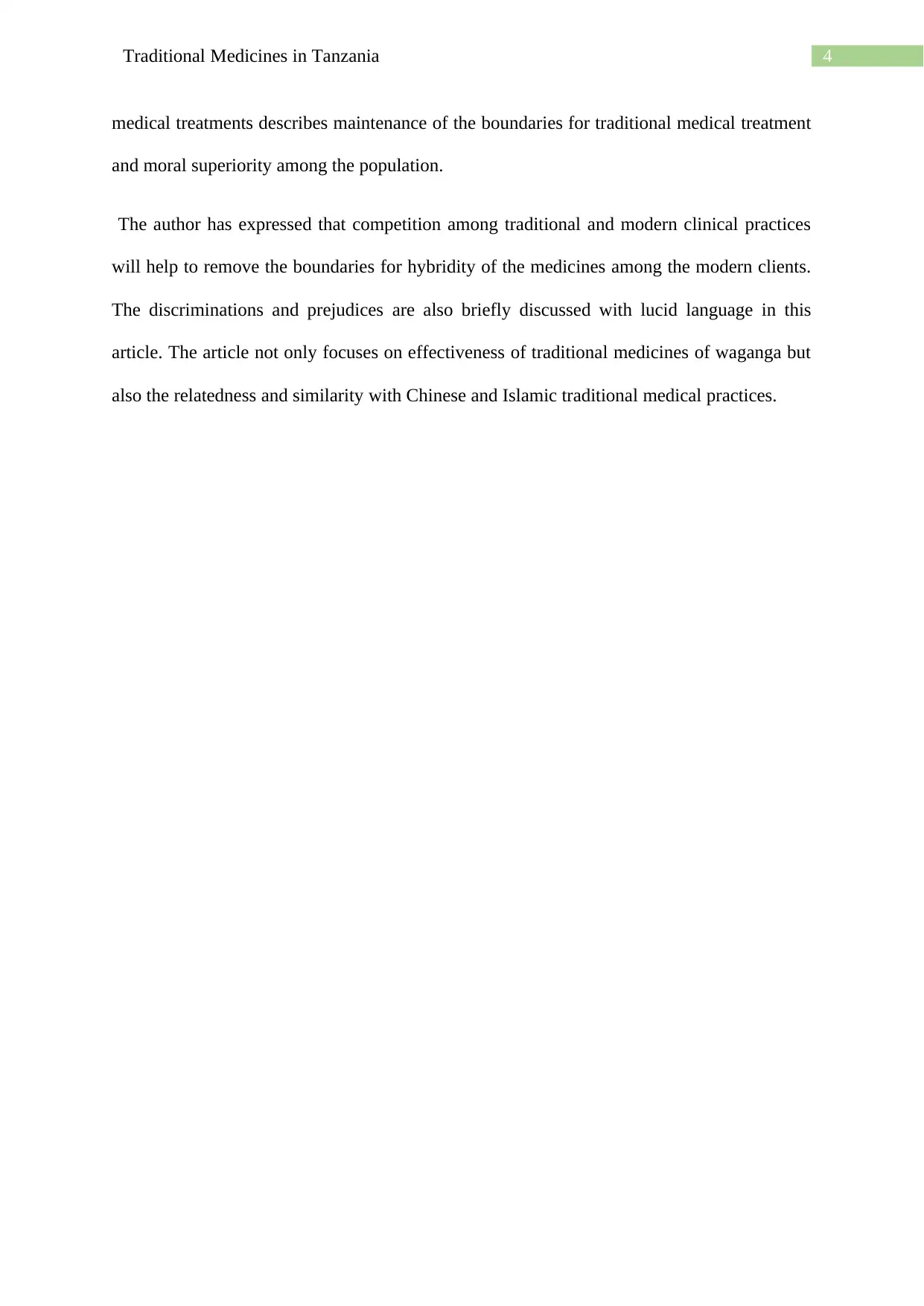
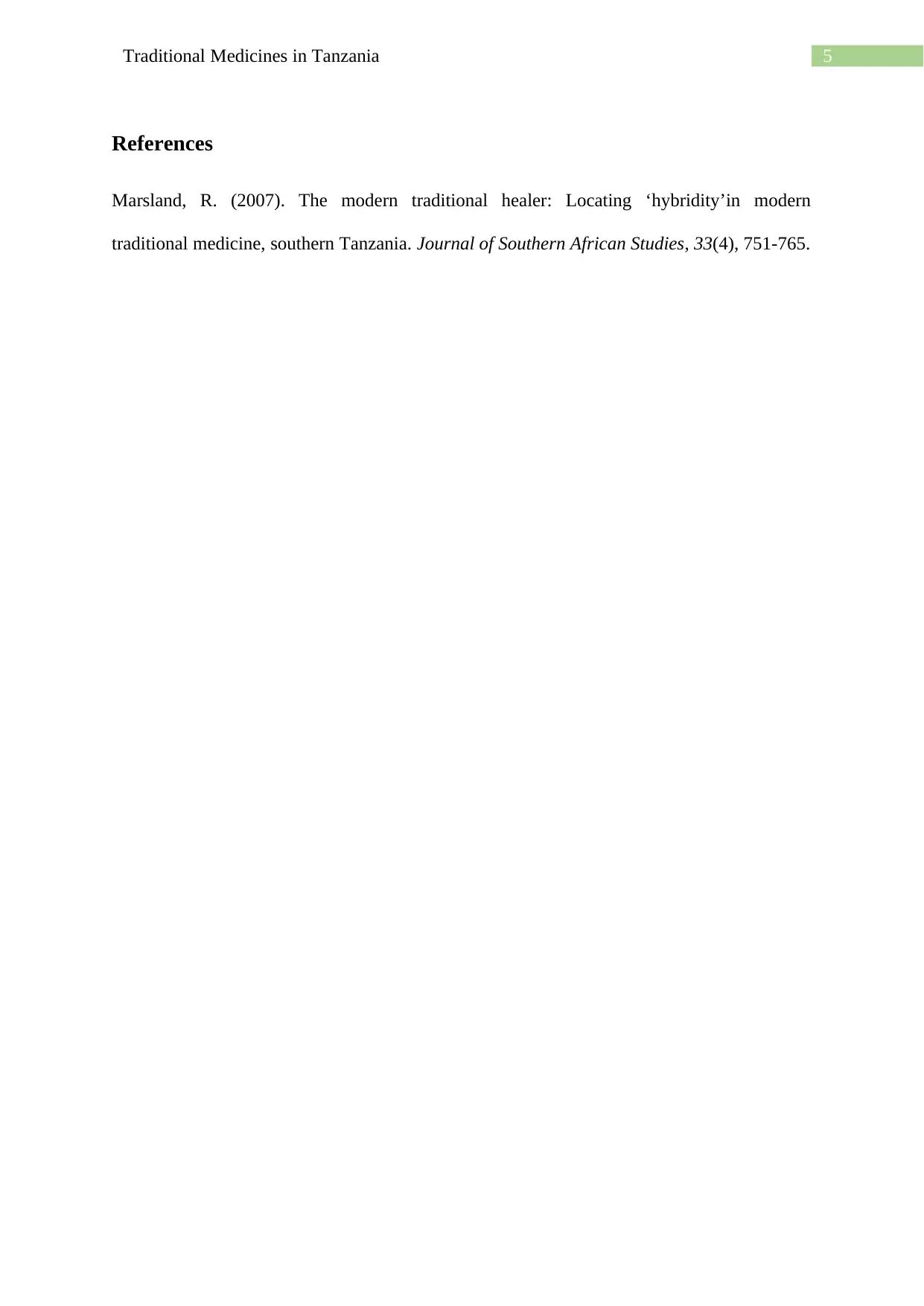






![[object Object]](/_next/static/media/star-bottom.7253800d.svg)